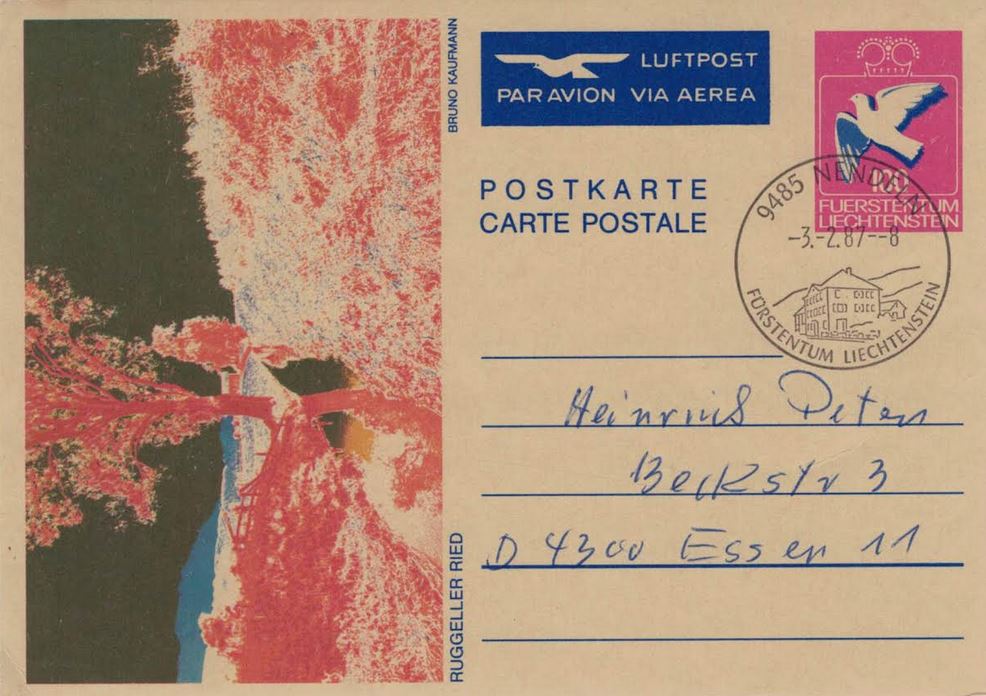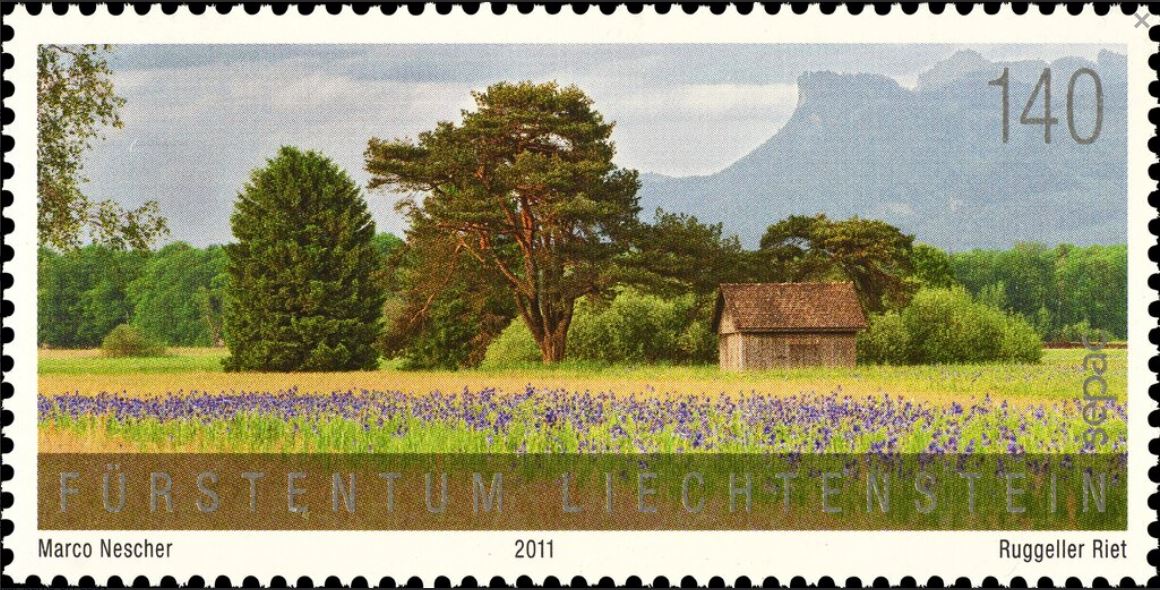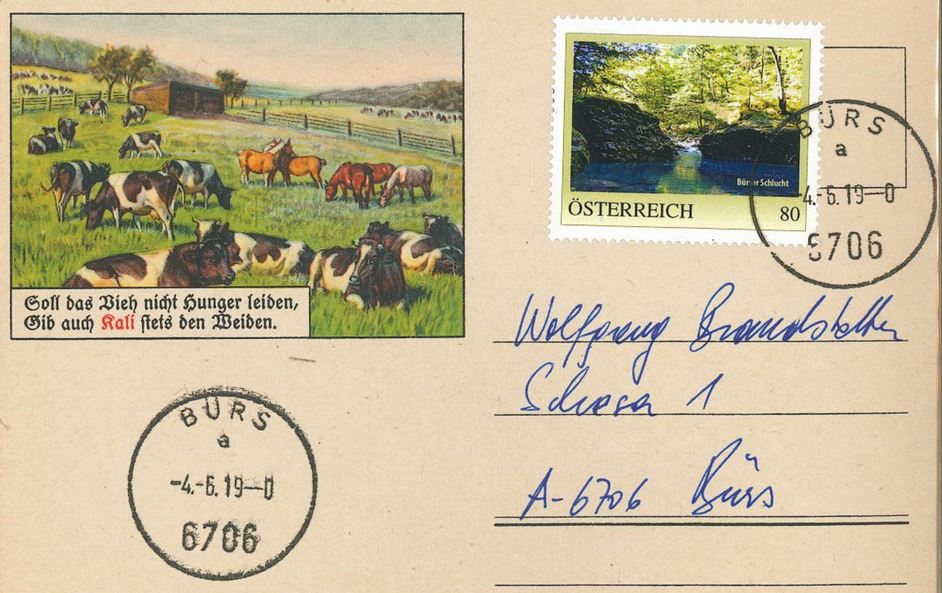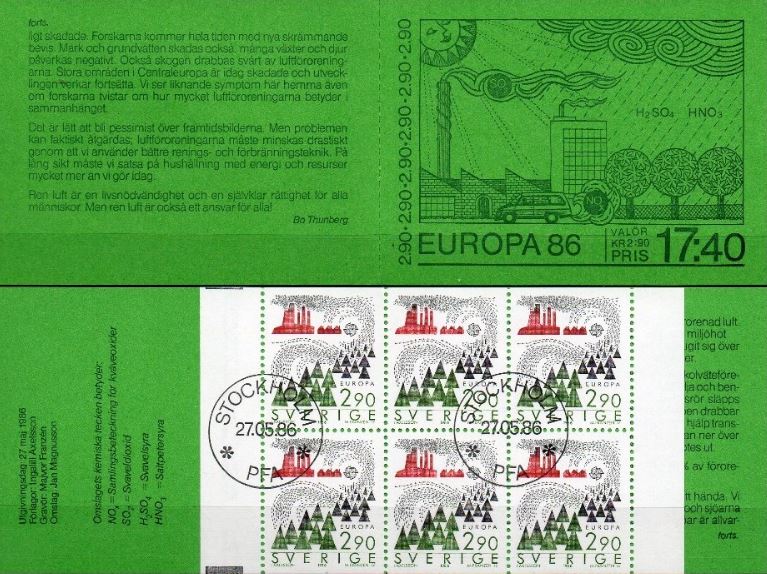
Copyright granted by B. Kaufmann
Today I have chosen a Liechtenstein postal stationary – for the following reasons:
- The imprinted stamp is a dove: and we can’t have enough peace doves these days. The imprinted stamp is on a postal stationary with imprinted airmail mark, which was in use from 12.3. – 31.12.2001. The postal stationery was cancelled in Nendeln on 3.2.1987. What is special about it now is that this local postmark (K postmark no. 1974) was used for the first time on this day.
- The artist’s card was designed by Bruno Kaufmann, a Liechtenstein artist. After studies and a time in Berlin, he returned to Liechtenstein and devoted himself to art education here. He also founded the Liechtenstein School of Art. This card was one of three and depicts the Ruggeller Riet.
 The Ruggeller Riet(d) is the largest wetland in Liechtenstein (nature reserve). It is one of the last fens in the valley area of Liechtenstein and one of the few relicts of the formerly extensive Rhine valley fens. It contains a rich and rare diversity of plant communities, biotopes and landscape structures. It is known, among other things, for the blooming of the Siberian iris in May and June each year, which can be seen on the stamp from 2011.
The Ruggeller Riet(d) is the largest wetland in Liechtenstein (nature reserve). It is one of the last fens in the valley area of Liechtenstein and one of the few relicts of the formerly extensive Rhine valley fens. It contains a rich and rare diversity of plant communities, biotopes and landscape structures. It is known, among other things, for the blooming of the Siberian iris in May and June each year, which can be seen on the stamp from 2011.

The blue flower: Iris Sibirica

Advertisement for fertilizer “Kali”

Booklet from Sweden – pollution by traffic
However, the nature reserve is largely no longer a fen – it is drying out, partly due to climate change. In addition, there are nutrient inputs that strongly change the vegetation and thus also the fauna. Nutrient inputs take place mainly through the air and probably originate up to ¾ from agricultural livestock, but also the increasing road traffic through the Riet and past the Riet with its nitrogenous exhaust fumes contributes to eutrophication. In addition, there is a lack of buffer strips between parts of the protected area and adjacent intensively used agricultural areas, which would prevent or at least significantly reduce excessive nutrient inputs into the meager sites.
Efforts are now being made to re-wet the fen. The aim is to keep enough water in the reed, especially during dry periods, by means of a sophisticated irrigation system with the help of small weirs. But what is being done to reduce nutrient input? Nowhere here have I found a project that addresses this problem. Too good lobbying? I’m happy to be proven wrong, though. But I am afraid that soon we will hardly see extensive iris meadows in the Ruggeller Ried anymore.
